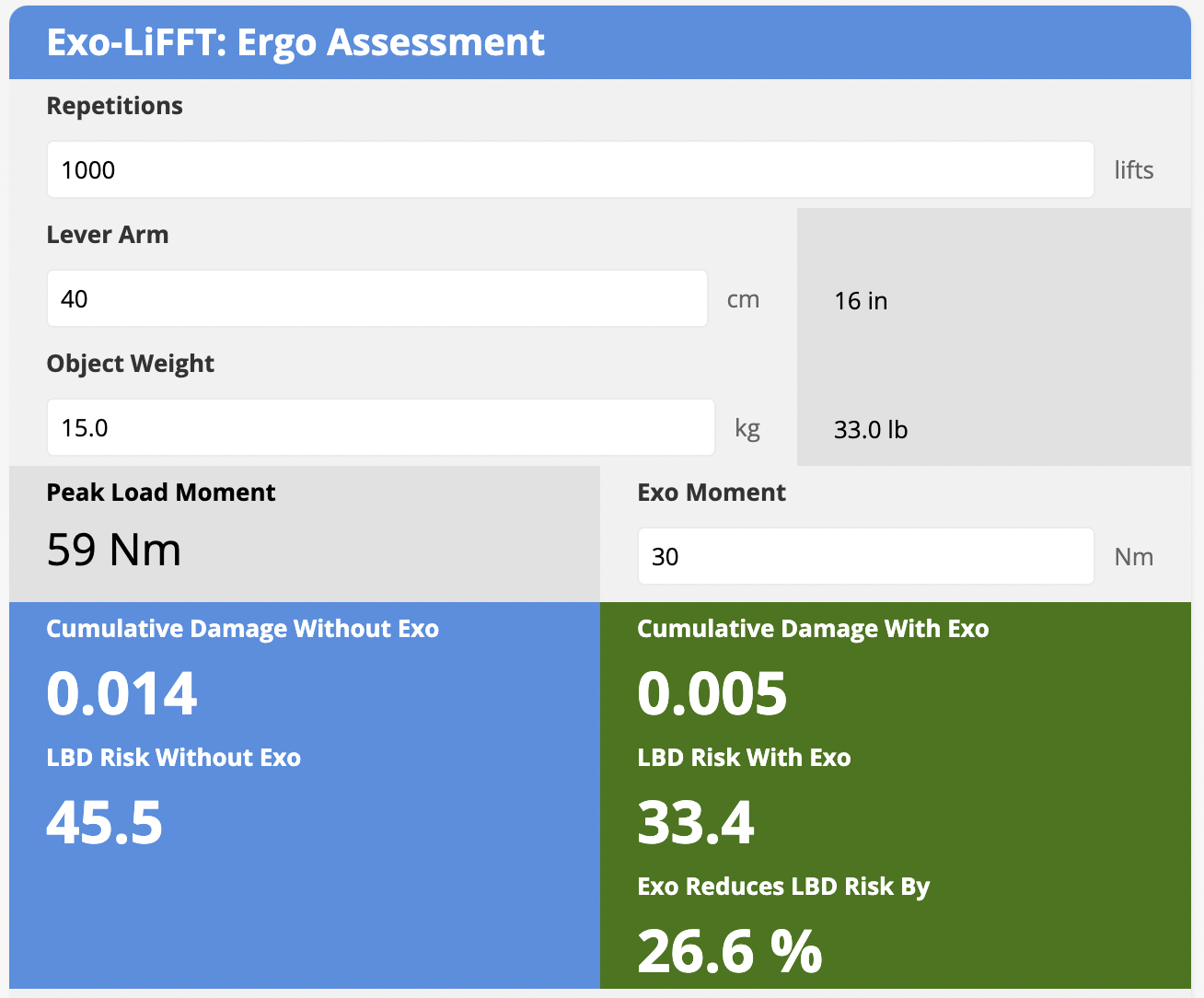Exo-LiFFT
Exo-LiFFT is an ergonomics assessment tool to estimate the effect of back-assist exoskeletons and exosuits on low back disorder (LBD) risk during occupational lifting tasks, without the need for EMG testing.
Free Exo-LiFFT Calculators
Calculators are in Beta Version, and are being distributed in the hope that they will be useful, but are provided “as is” without any warranty, express, implied or otherwise.
Exo-LiFFT Reference: Zelik, K. E., Nurse, C. A., Schall, M. C., Sesek, R. F., Marino, M. C., & Gallagher, S. (2021). An ergonomic assessment tool for evaluating the effect of back exoskeletons on injury risk. https://pubmed.ncbi.nlm.nih.gov/34740072/
Original LiFFT Reference: Gallagher, S., Sesek, R. F., Schall Jr, M. C., & Huangfu, R. (2017). Development and validation of an easy-to-use risk assessment tool for cumulative low back loading: The Lifting Fatigue Failure Tool (LiFFT). Applied ergonomics, 63, 142-150. https://www.sciencedirect.com/science/article/pii/S0003687017301023
Example of how to use Exo-LiFFT calculator:
Imagine a safety professional has already implemented good ergonomic practices within the hierarchy of controls, to the extent practical. However, back discomfort and injuries persist amongst workers. They decide to evaluate the potential benefits of a commercially-available back exo that provides 30 Nm of torque about the back during a typical lift. In practice, this 30 Nm exo moment comes from mapping the lifting postures of workers (e.g., bend angles during lifting, as assessed by the safety professional) onto the mechanical assistance provided by an exo (e.g., back extension moment vs. joint angle curve provided by the exo manufacturer, or found from empirical testing of the device). If needed, contact the exo manufacturer to request exo moment values for relevant work tasks.
In this example, let’s say the safety professional already knows (from their previous ergonomic assessments, reviewing videos of work tasks, or from operational/organizational data) that their workers perform about 2,000 lifts per day, the average object lifted is 15 kg, and average horizontal distance from the spine to the object is about 50 cm. For this precursory analysis these values can be ballpark estimates, but note that the average peak exo moment (at or near the time of peak load moment) expected for a given job or task should be used, not simply the maximum moment an exo can generate.
Given this simple information, the safety professional can now use Exo-LiFFT to estimate the Cumulative Damage and LBD (Low Back Disorder) Risk to the workers with vs. without the exo, to quantify expected effects of augmenting workers with exos. The safety professional would simply input into the Exo-LiFFT Calculator:
- Repetitions: 2000
- Lever Arm: 50 cm
- Object Weight: 15 kg
- Exo Moment: 30 Nm
The Exo-LiFFT Calculator will compute the reductions in Cumulative Damage and LBD Risk with vs. without the exo.
See the manuscript for more details and examples.
